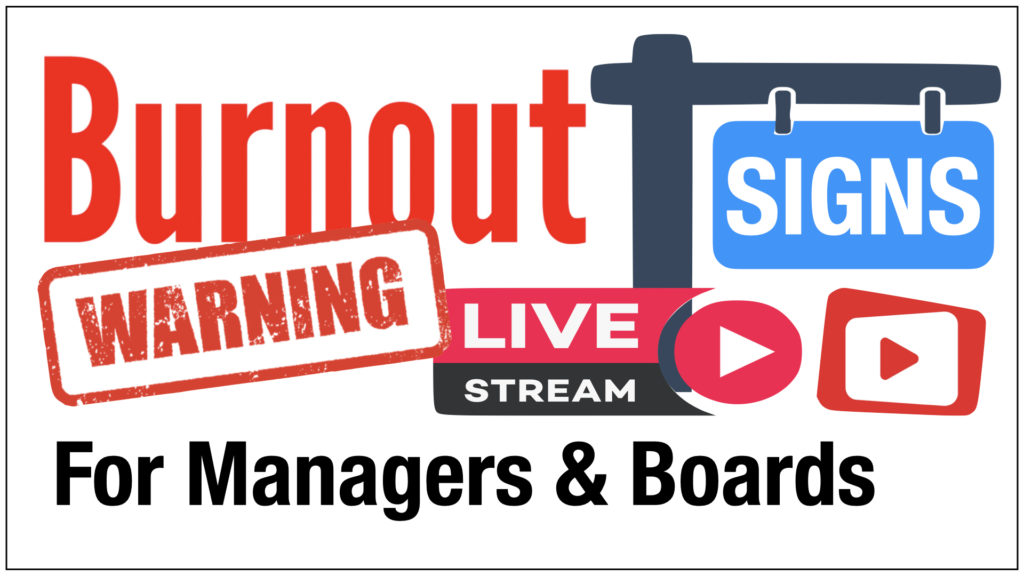
NATIONAL:
Boards and Managers — Learn How to Get Your Life Back!
The job of community manager is very demanding, requiring the ability to handle many varied tasks and situations simultaneously — all while keeping their communities running smoothly on a daily basis. A manager never knows what can or will come up on any given day — leaks, slip-and-falls, storms, arguing residents and board members — the list goes on and on. It’s also not a clear-cut, nine-to-five type job. Meetings are frequently held in the evenings or on weekends, and many can go on for hours. Managers are also typically on call for any after-hours emergencies that may occur. It’s no wonder that many managers report experiencing stress, and for some, it goes beyond that and becomes burnout.
What is burnout? According to Melissa Ann Russiano, LCSW, a licensed clinical social worker and coach who works with individuals in many different fields, it’s cumulative stress that eventually leads to burnout.
Russiano noted that stress is something that we deal with on a daily, weekly or monthly basis. “Burnout is a result of accumulated stress to the point that it impacts you physically, mentally, emotionally and socially. It is an overwhelming heaviness on top of you. But it doesn’t qualify as depression, which is a mental health diagnosis, which is what I think a lot of people fear,” said Russiano.
“The term burnout is something that’s used a lot right now, and there’s a big difference between the three terms, burnout, stress and depression. Is this stress? Is this burnout? Is this depression? That’s something I get in there and assess,” she said.
In working with clients, she asks the questions, “How did we get here, and how can we get you back to being you?,” noting that burnout can be reversed with intervention.
She explained that if you have stress, you can take a vacation and spend a week in a beautiful place like Fiji, and you’ll come back feeling refreshed. With burnout, that week of vacation won’t make a person feel better. “That’s one thing you’re looking at, your ability to course correct, and how deep it’s seeded,” she said.
Here are some warning signs of burn out:
-Taking a vacation doesn’t make you feel better
-Your ability to think and meet deadlines is affected
-You’re exhausted
-You’re not always able to get up in the morning and be where you need to be
What is the time-frame for treatment for burnout? “How much time it takes depends on your support system, and it depends on how much you’re willing to work on it,” she said. Some individuals have needed to take up to a year off work. “For some individuals, they need significant time away to work with a medical professional if it’s impacted them physically, or to work with a therapist or coach if it’s impacted them emotionally, to be able to put those structures in place to not return to that lifestyle that caused the burnout in the first place,” she said.
The first thing Russiano does with those she works with is to determine what their core values are. “We’re all established and we all have core values that make us who we are,” she said. She wants clients to be able to look at those and see how those values align with how their schedules look. For example, she said, “if my core value is family, but my schedule is ninety percent work and ten percent family, I’m not going to have the balance, the satisfaction or the ability to refill those buckets that my work is draining from me,” she said.
“…You can do for you that’s only for you…”
Figuring out what your why is, and being able to start creating some space in your schedule is imperative. “You can always create that space if you’re intentional, and if it’s important enough to you,” said Russiano. She suggested that people carve out time for themselves. For example, she uses a no screen Saturday. “I work six days a week, but Saturdays I check out,” she said. Other suggestions are making time for your family, scheduling time to go to the gym, or even fifteen minutes of meditation in the morning or a half hour yoga class. “What is that one thing you can do for you that’s only for you to start refilling that bucket. And most importantly, do your values align with what you’re doing?” she asked.
So what can managers do during the day to help stave off burnout? She noted that vacations are wonderful, but since most of us only get to take a vacation once, or maybe twice a year, “That’s not going to do anything to even put a dent in burnout because they’re so episodic and we still have 48-49 weeks during the year,” she said. “On a daily basis, to be able to have a five-minute pause — to get up and walk around your building once. Actually eat lunch without multi-tasking, even if it’s ten minutes. To be able to work into your day a two-minute pause or five-minute pause, once an hour, once a morning — I’d even take once a day when I start working with people — to be able to get up, walk around your desk and stretch,” she said. “Everyone can find five minutes in their day.”
Also important is only doing one task. “Multi-tasking has been leading to more and more burnout because we feel, as over achievers or perfectionists who usually fall in that category, that we can accomplish ten things at once,” said Russiano. When people multi-task, they typically do those things poorly and that leads to stress, heaviness and pressure. “Maybe just do one thing and be present in that one thing,” she said.
She also said that there are many apps people can utilize to help them take the time they need for themselves. “I’ve actually found an incredible app that reminds people to eat. And I know that sounds absolutely ridiculous, but when you are being pulled in all these different directions, it will send an alert to your phone every two-and-a half, three-and-a-half or every four hours that says ‘hey you should fuel your body, not with caffeine, but with something that will help you get through your day,” she said. “To be able to carve out that time to just pause, and be realistic with what one can accomplish within a day.”
Russiano noted that cumulative stress leads to burnout, and cumulative calm leads to more internal satisfaction, balance and peace. “So five minutes may feel like nothing,” she said, “but you add five minutes, and day after day after day, you start craving those five minutes, looking forward to those five minutes, knowing that your brain is going to get peace,” she said, “cumulative pause is going to lead to the solution.”
She noted it’s these little things that reset your brain, but more importantly, they break that cycle. “That cycle of feeling like ‘I have to hustle to be more productive,’” which is one of the myths of burnout. “There is some truth in that. There’s also truth in that leading to burnout,” she said.
Written by AHN Staff



